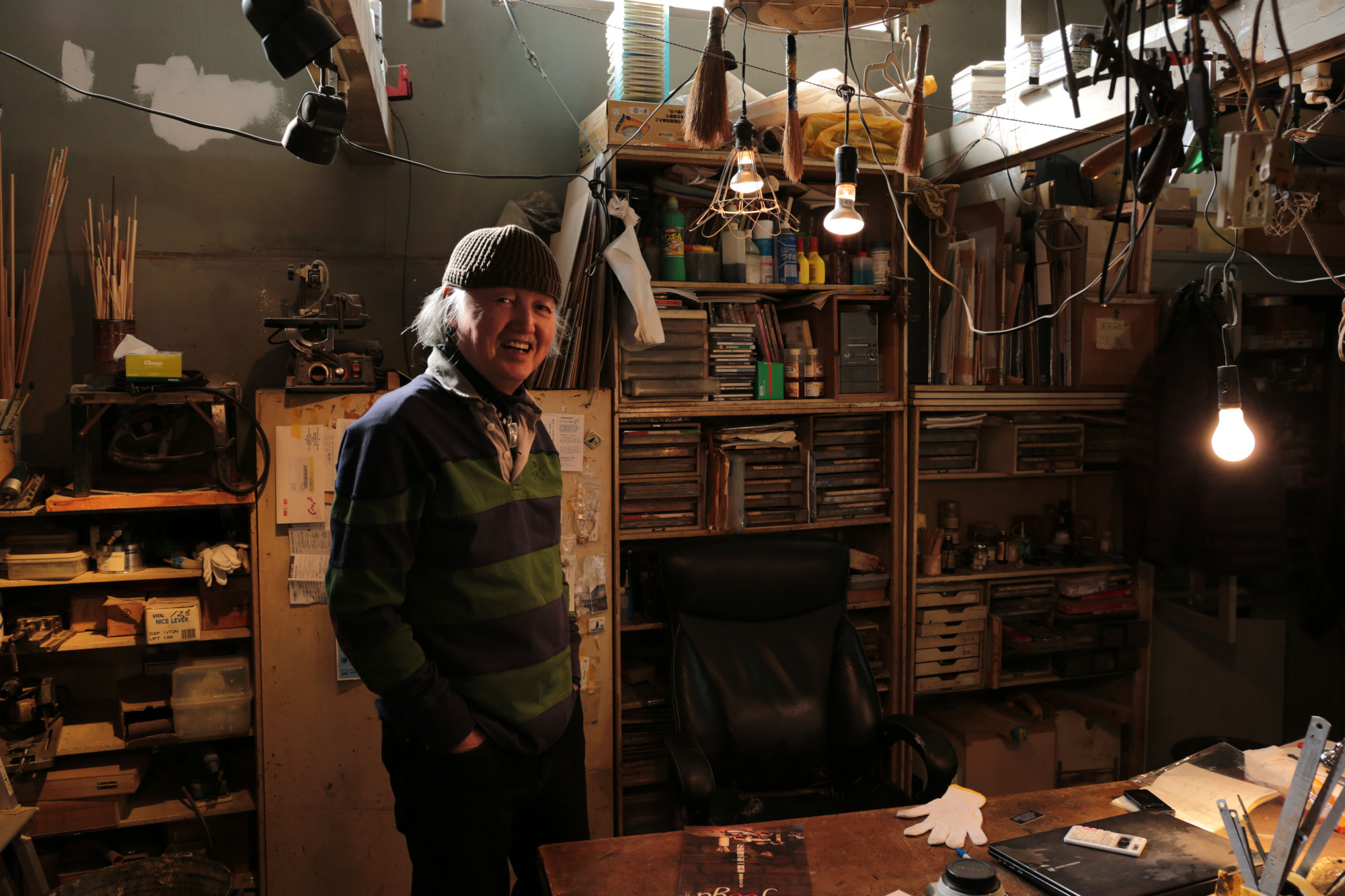On a crisp and cloudless winter morning, the streets outside Komagome Station in Tokyo's Toshima Ward scintillate with shards of sunlight cutting between sharp shadows. I bundle up against the cold, and set off to seek out an artisan that I heard tell of on a backstreet last summer. It's a luxury to have both a destination and plenty of time to wander.
A bridge over the railway tracks sports railings of blue enamel cherry blossoms, and to the south, I discover a tiny concrete plaza with a few dormant cherry trees and a stylized river of pink tiles running though it. It's a typical pocket park with little visual appeal, but I pull my camera out anyway, shifting a bag of treats I've brought for the artisan to my free arm in the process. Suddenly, I'm swarmed by a flapping kit of about 60 pigeons. Like Tippi Hedren in Alfred Hitchcock's 1963 thriller "The Birds," I'm alarmed, but manage to catch a few photos on the fly. The pigeons, gradually figuring out that I'm not going to feed them, flock off, but they leave me newly alert to my surroundings.
Because of the birds, I note a small placard, identifying the plaza as the Somei-Yoshino Memorial Park. Apparently I'm standing in the heart of what was once Somei-mura, an Edo Period (1603-1868) village of gardeners admired for their advanced hybridization of trees and flowers. The village is long gone, but is celebrated in the name of Somei-Yoshino cherry trees (Prunus x yedoensis), a cultivar derived from a grafting of the Yoshino variety from Nara and a local Somei cherry. Both Tokyo and Washington D.C. are awash in the hardy, showy Somei-Yoshino hybrid, probably the most widely planted variety of blossoming cherry today.



















With your current subscription plan you can comment on stories. However, before writing your first comment, please create a display name in the Profile section of your subscriber account page.